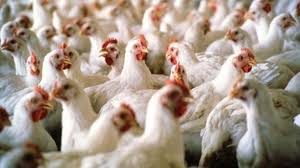 Poultry Producers Union: Entering new production cycles after reducing feed prices
Poultry Producers Union: Entering new production cycles after reducing feed prices
Dr. Tharwat Al-Zaini, Vice President of the General Union of Poultry Producers, confirmed that poultry prices have decreased on the farm and have become 25% cheaper than imported ones, noting that their weights have begun to rise on farms as a result of the increase in production. Farm owners have also tended to leave the chicks on the farms to increase their weights and compensate for losses resulting from the decrease in prices.
Al-Zaini said in a statement that there is stability in the prices of feed that have become available in the markets, which has encouraged breeders to increase poultry production and enter new cycles for both broiler farms and egg farms, which leads to an increase in poultry and egg production and a decrease in their prices, noting that an agreement has been reached with commercial chains and supermarkets to sell a carton of eggs for 150 pounds according to an initiative between the Poultry Union and the government, which stipulates that stores, chains and traders bear the cost of transportation, while a carton of eggs is obtained for 150 pounds from the farms. Al-Zaini explained that the prices of table eggs will decrease next week to 120 pounds per carton instead of 150 pounds, noting that the quantities imported from abroad are small and do not represent a percentage, and that the decrease in prices came as a result of the increase in production, and there will be a decline again if it continues to increase, stressing that the imported amount reaches 30 million eggs per month, while our needs in the local market are 40 million eggs per day, and therefore the imported amount is not equal to a tenth of the amount consumed daily.
The Vice President of the General Union of Poultry Producers concluded by saying: “There are signs of table eggs in the market, which confirms that there are new production cycles that have entered the markets, and their flocks have also entered, and poultry feed and its raw materials are stable and available, and there is regularity in pumping vaccines to markets and farms, and vaccine shortages have begun to appear in the market and flow to farms at the present time.”
Source: www.agrinewz.


















